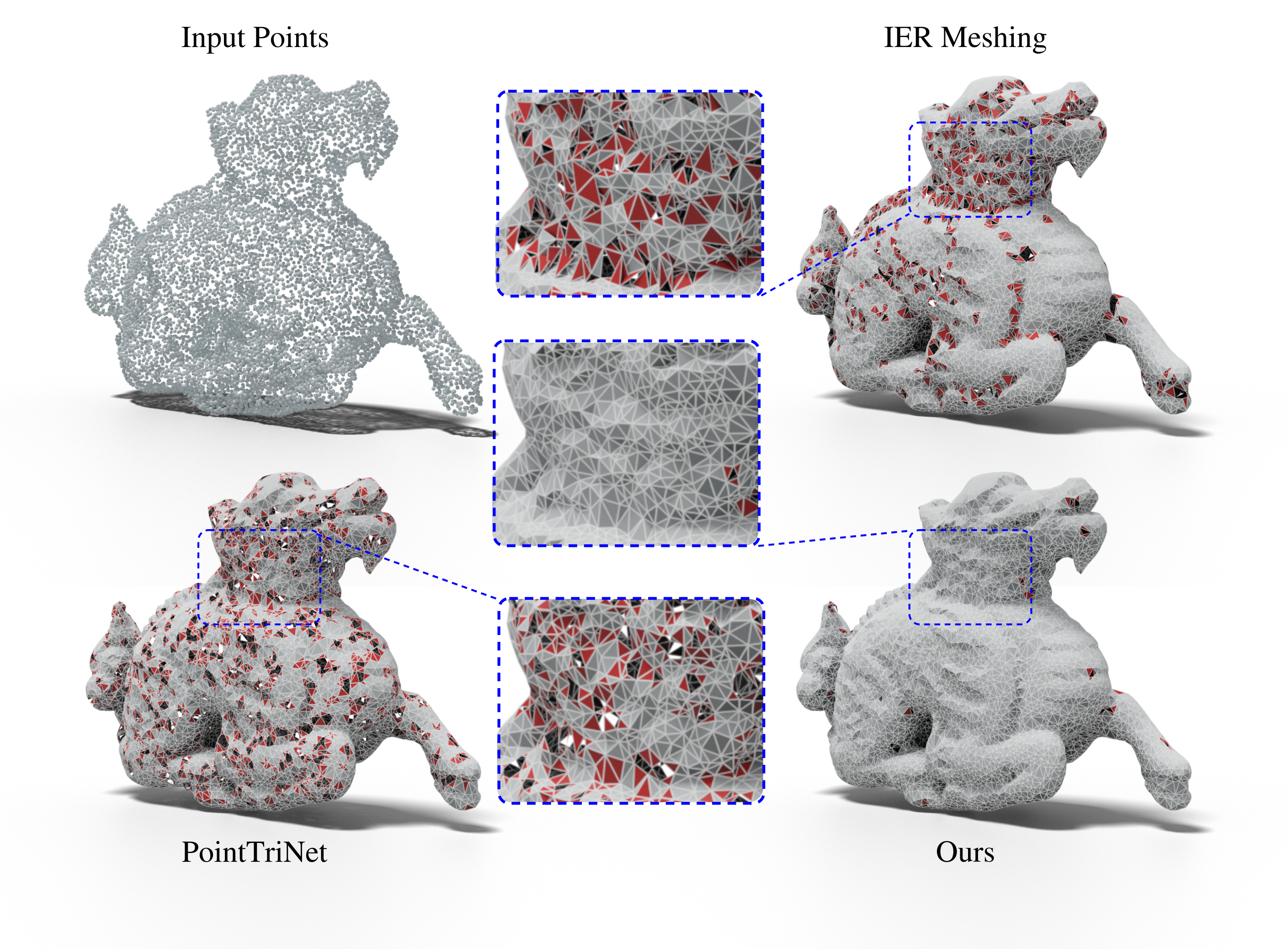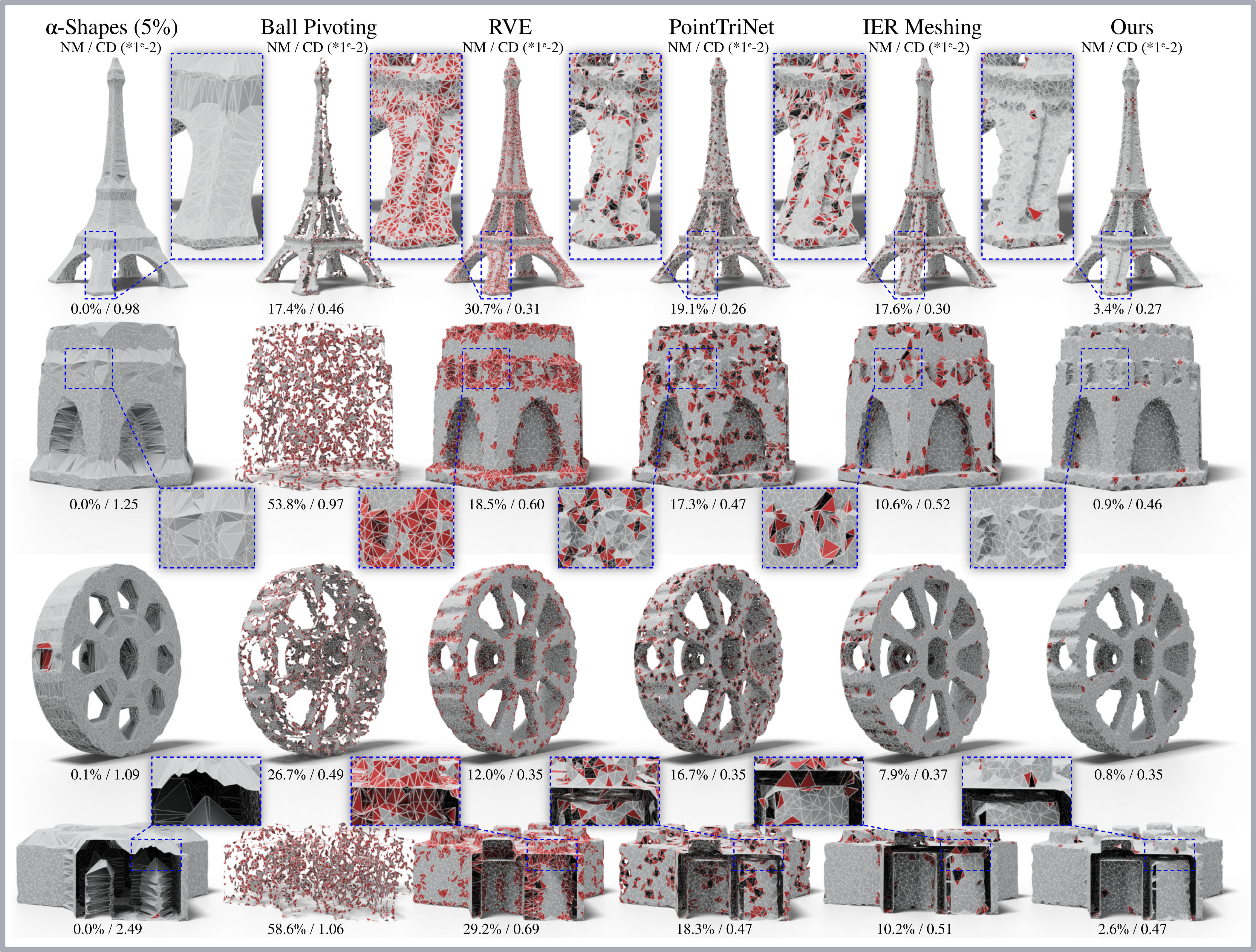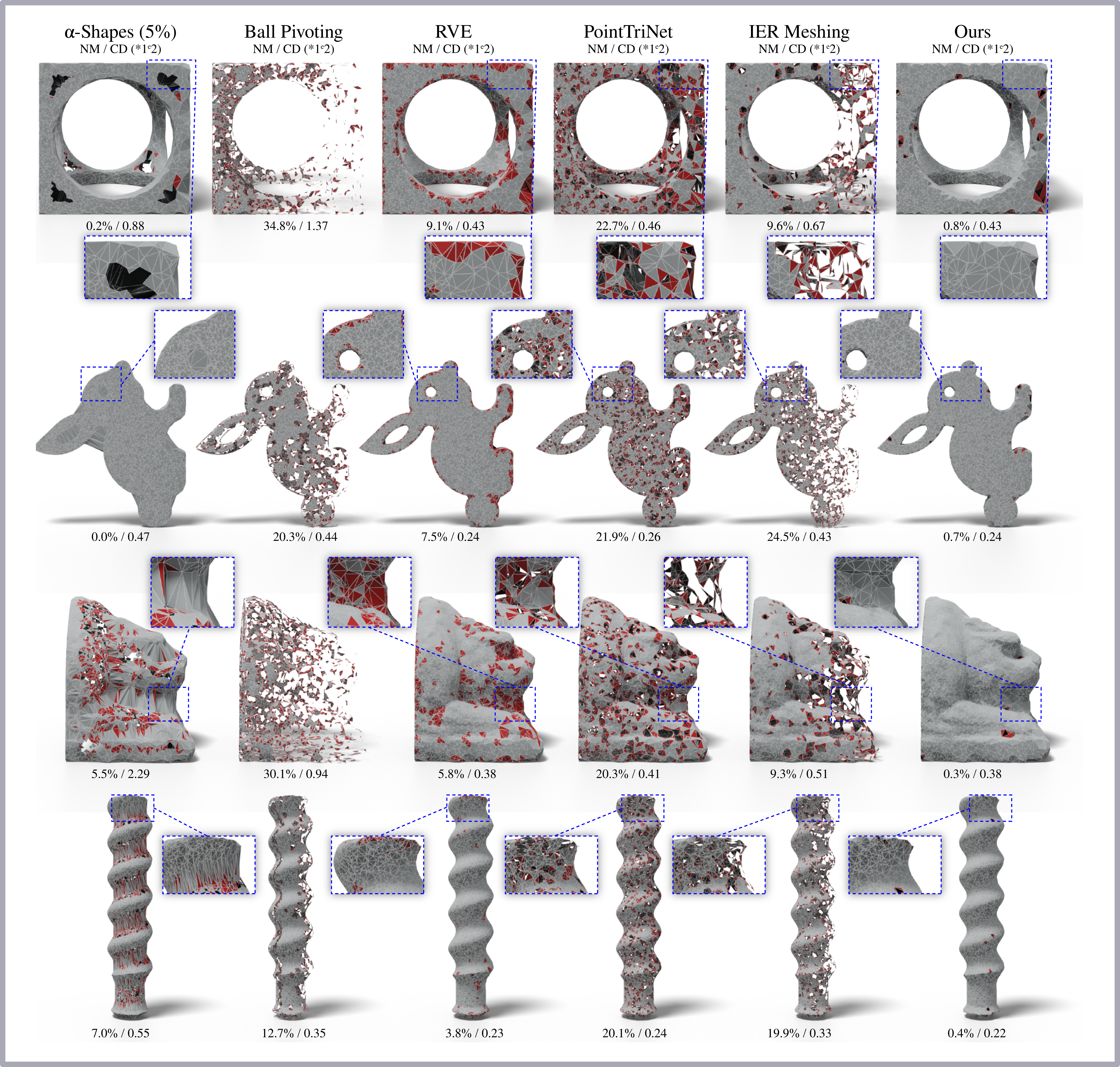We present a method for mesh reconstruction from point clouds. We combine Delaunay triangulations with learned local parameterizations to obtain a higher-quality mesh than the current state-of-the-art. Bad (non-manifold) triangles are shown in red. We compare to PointTriNet [1] and IER Meshing [2].
Learning Delaunay Surface Elements for Mesh Reconstruction
Marie-Julie Rakotosaona1, Paul Guerrero2, Noam Aigerman2, Niloy J. Mitra2,3, Maks Ovsjanikov1
- 1LIX, Ecole Polytechnique, IP Paris
- 2Adobe Research
- 3University College London



